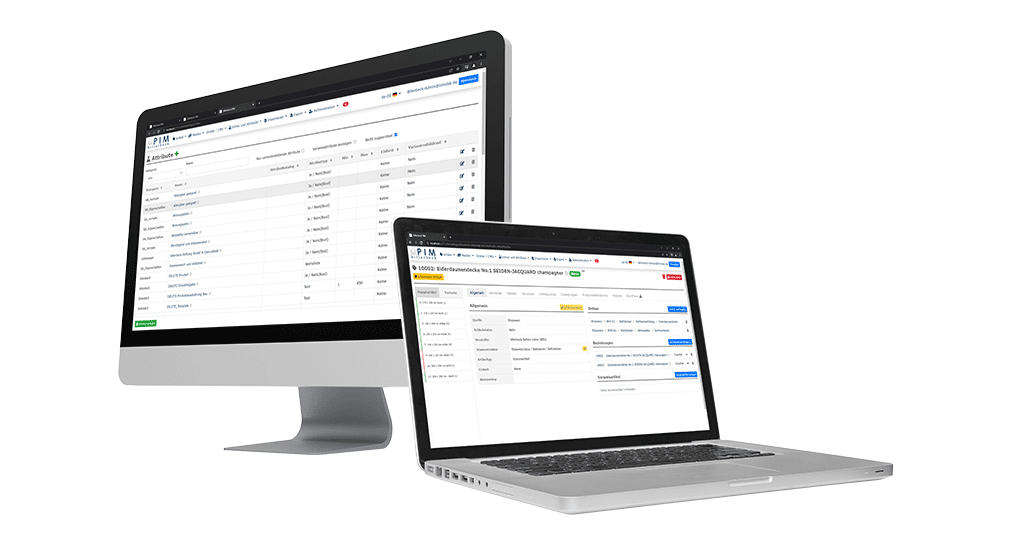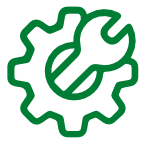TRINIDAT-WIKI
What is software development?

Whether in our leisure time or at work, software accompanies and guides our lives. It is the decisive resource for the digitalization of work and production processes. But how exactly is software developed? We provide compact and comprehensible answers to the question: What is software development?
You have questions?
We have the answers!
Do you need a cost-effective and modern software solution?
What exactly is software?
To approach the question, it should first be clarified what software actually is exactly. Software is primarily a collective term for programs and their data. The task of software is to tell the hardware, for example a PC, what to do. It is the counterpart to hardware and describes all the non-physical components of a computer-based system. The operating system, the installed programs and all the data generated by them belong to software. Many devices contain software – from washing machines and navigation devices to fitness trackers. The following types of software can be distinguished:
What are the different types of software?
Apps:
Applications are programs and apps that help users complete specific tasks. Whether it’s word processing or editing photos: Application software is usually used by human users. It exists as a web application or PWA, as an app, or classically as locally installed desktop software. In addition to standard applications, there are a large number of individually developed programs.
System Software:
System software is what makes it possible to start the computer and get applications running in the first place. The most common operating systems are Windows, Mac OS X and Linux. Operating systems also provide the user interface that runs programs and apps. In addition, system software controls the connection between software and hardware components via interfaces.
Embedded Software:
This refers to software that usually acts without a human user and is programmed for embedded systems. Embedded software can be found hard-wired into countless machines and devices. The programs of the washing machine are just as controlled by this type of software as the game console in the children’s room. And in each case, the hardware is incompatible with other software.
How exactly is software developed?
The term software development refers to all activities to create a software: starting with programming, through design to software testing. In this respect, software development comprises a series of recurring processes that can be structured on the basis of a software life cycle. The so-called Software Development Life Cycle (SDLC) describes a procedure model of the software development and divides the interdependent phases usually into six sections: Requirements Analysis, Design, Development, Test, Release, and Maintenance & Support.



Phases of software development
Whether new development or continuation of an existing application, software development can be broken down into the following 6 phases of the SDLC.
.
1. requirements analysis.
After the basic planning of the software project has been done, it is a matter of collecting and evaluating the exact requirements for the software to be developed. Who will use the software and for what purpose? What data will be processed? What specifications should the software have? All information is bundled into a requirements profile that is as concrete as possible and lists expectations of the software development and the general conditions. In the case of software development according to the classic waterfall model, this is followed by the conception of the application in the form of an implementation concept.
2. design.
The second phase includes the draft of a basic design of the software. Here, developers and conceptual designers decide on both the software architecture and the appropriate technologies, as well as the time frame, the personnel used and workflows.
3. development.
The core of any software development cycle is the programming phase. In agile development, the tasks are now divided into individual modules and the developers sit down to program. As a rule, this phase is the most time-consuming and concludes with the finished programmed software.
4. test.
As with any quality product, an individually created software should be tested intensively before deployment. The test phase is about putting the software on the test bench comprehensively according to a fixed test concept. Manual and automated test procedures identify and eliminate errors and bugs. Various test methods are used to test code quality, usability, data security and much more. Only after all defects are fixed and the software exactly meets the requirement profile, the application is deployed.
5. release.
In this phase, the new or further developed software is rolled out. Now the customers can work with the application.
6. Maintenance & Support.
Despite extensive software testing, it happens again and again that only during use errors and vulnerabilities appear at the software. In this phase, the development team cares to fix these defects and give the application the final touches.
By the way, trinidat customers receive a full 24-month warranty with free support and troubleshooting.
Procedure models of software development
Procedure models structure the process of software development and define the sequence in which tasks are executed along the software lifecycle. The models describe the roles of all project participants and their activities in the phases of software development. In addition, they provide standardized target definitions for time, budget and capacity expenditures. There are more than 50 process models, each with its own advantages and disadvantages depending on the intended use. Basically, a distinction can be made between classic models, such as the waterfall model, and agile models, such as Scrum.

Classic model: example waterfall model
.
The classic among the process models is the waterfall model. This sequential procedure model of the software development divides the project into firm sequential phases. Based on the Software Development Life Cycle (SDLC), analysis and planning, programming, testing and maintenance are carried out in sequence. The next phase begins in each case only, if the previous one was locked. An adjustment of the development steps during the development is not planned. The advantage of the waterfall model is to complete software development according to precisely designed requirements and to stay strictly on schedule and on budget. For smaller and clear software developments or for projects with strict or rigid requirements (e.g. legal guidelines), this model can be advantageous. The major disadvantage of the waterfall model in software development is the lack of flexibility during the development phases.
Agile Models: Example Scrum
.
In contrast to classic process models of software development, agile models have established themselves and are preferred by a majority of companies today. While classical models have a fixed sequence, agile models are iterative. Software development therefore follows a recurring and step-by-step process. Agile software development is designed to be flexible and lean, breaking up the rigid phases of the software lifecycle. In one of the most popular agile methods, the Scrum method, the entire software development project is divided into iterations (called “sprints” in Scrum). This small-scale approach incorporates feedback from the customer for each project step and picks up analysis and evaluation of the sprint. Sprints usually last between two and four weeks and thus enable flexible responses to changing requirements or problems during development in short periods of time.
Custom software development
Software development can be for individual software or for standard applications. Standard software is usually developed for a large group of users and marketed as a mass product, so to speak. Well-known applications such as Microsoft Word or Photoshop from Adobe are standard software that contain broad-based features and functions. Users of standard software can usually adapt the programs only slightly to their own requirements.
In contrast to standard software, custom software is developed specifically for the client and is therefore unique. In the development of individual software, the focus is on the specific customer requirements. New production processes or changed business procedures can create requirements for which standard software is no longer sufficient. Individual software can also become necessary as a component of a separate product. In addition, individual software comes into question when it comes to the modernization, further development or replacement of existing software.
The big advantage of individual software development is the accuracy of fit. The entire software development follows exactly the individual customer requirements. Result: customers receive exactly the program functions and features that are really necessary for their project. Custom software can be developed classically according to concept or agilely.
Often, custom software is considered particularly costly compared to standard software. However, when used over a longer period of time, custom software often becomes more affordable than standard applications. This is because with custom solutions, in addition to the source code and the option to customize as the owner of the software, customers also receive an unlimited number of licenses and an unlimited period of use – without extra costs.
Want to learn more about custom software development?
Arrange your free consultation now.
We look forward to your inquiry.
